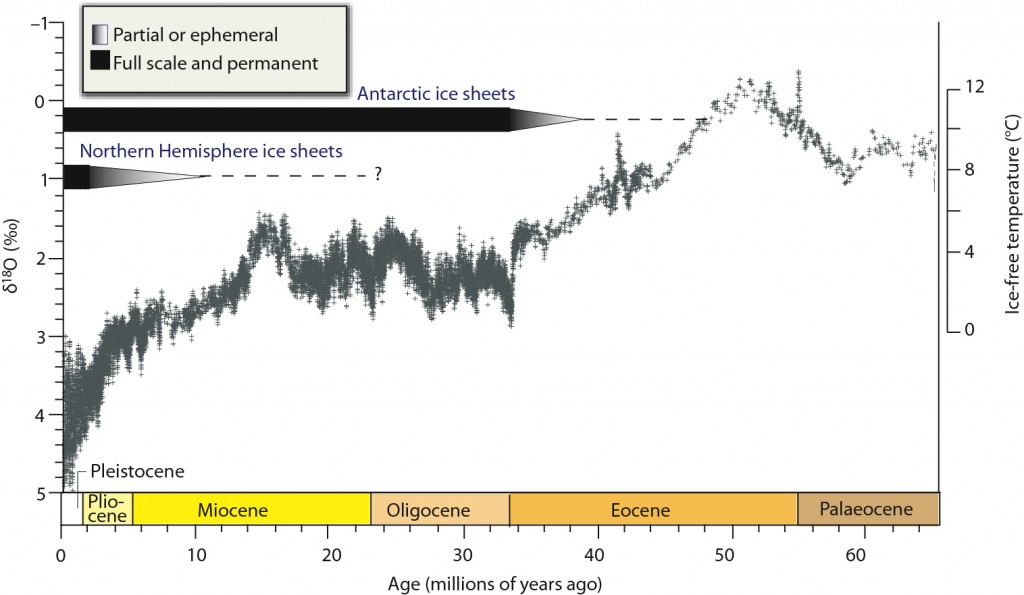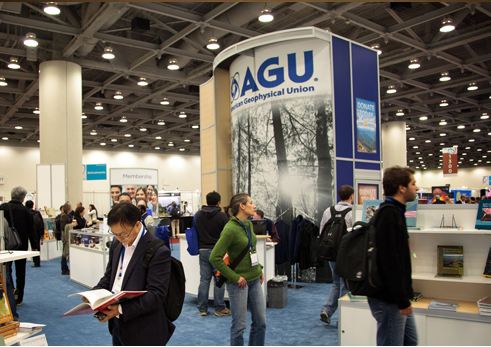PR: What the geological evidence of the past tells us about modern sea-level rise
12 December 2013
Researchers from the University of Southampton and the Australian National University report that sea-level rise since the industrial revolution has been fast by natural standards and – at current rates – may reach 80cm above the modern level by 2100 and 2.5 metres by 2200.
The team used geological evidence of the past few million years to derive a background pattern of natural sea-level rise. This was compared with historical tide-gauge and satellite observations of sea-level change for the ‘global warming’ period, since the industrial revolution. The study, which was funded by the Natural Environment Research Council (iGlass consortium) and Australian Research Council (Laureate Fellowship), is published in the journal Scientific Reports.
Lead author Professor Eelco Rohling, from the Australian National University and formerly of the University of Southampton, says: “Our natural background pattern from geological evidence should not be confused with a model-based prediction. It instead uses data to illustrate how fast sea level might change if only normal, natural processes were at work. There is no speculation about any new mechanisms that might develop due to man-made global warming. Put simply, we consider purely what nature has done before, and therefore could do again.”
Co-author Dr Gavin Foster, a Reader in Ocean and Earth Science at the University of Southampton, who is based at the National Oceanography Centre, Southampton (NOCS), explains: “Geological data showed that sea level would likely rise by nine metres or more as the climate system adjusts to today’s greenhouse effect. But the timescale for this was unclear. So we studied past rates and timescales of sea-level rise, and used these to determine the natural background pattern.”
Co-author Dr Ivan Haigh, lecturer in coastal oceanography at the University of Southampton and also based at NOCS, adds: “Historical observations show a rising sea level from about 1800 as sea water warmed up and melt water from glaciers and ice fields flowed into the oceans. Around 2000, sea level was rising by about three mm per year. That may sound slow, but it produces a significant change over time.”
The natural background pattern allowed the team to see whether recent sea-level changes are exceptional or within the normal range, and whether they are faster, equal, or slower than natural changes.
Professor Rohling concludes: “For the first time, we can see that the modern sea-level rise is quite fast by natural standards. Based on our natural background pattern, only about half the observed sea-level rise would be expected.
“Although fast, the observed rise still is (just) within the ‘natural range’. While we are within this range, our current understanding of ice-mass loss is adequate. Continued monitoring of future sea-level rise will show if and when it goes outside the natural range. If that happens, then this means that our current understanding falls short, potentially with severe consequences.”
Bristol University: Oligocene discussion day
On the 16th of May, the University of Bristol held a half-day meeting devoted to the discussion of the Oligocene epoch (34 to 23 million years ago). The Oligocene is a period of relative climate stability following the establishment of permanent ice sheets on Antarctica (34 million years ago). However, it has received little attention from the Cenozoic palaeoclimate community. The aim of this event was to promote awareness of the Oligocene and encourage future research within this field.
Ellen Thomas, currently in Bristol on sabbatical from Yale, and David Armstrong-McKay, from the National Oceanography Centre (NOC), began the morning session with a series of talks devoted to the late Eocene and early Oligocene. Ellen discussed the Eocene-Oligocene transition (34Ma) from both a modern1 and historical2 perspective while David outlined the competing hypothesis put forward to explain the event3. Dierderik Liebrand, also from the NOC, followed this with a talk on late Oligocene and early Miocene (24-19Ma) cyclostratigraphy4. Following lunch, Bridget Wade gave an hour-long seminar on the Eocene-Oligocene boundary (34Ma)5 and the middle Oligocene (24-30Ma)6. Bridget’s talk doubled as a departmental seminar in the School of Geography.

Figure 1: A compilation of benthic foraminifera oxygen isotope values. During the Oligocene, this reflects a combination of ice volume and temperature7
The event was hosted by Gordon Inglis, a PhD student in the School of Chemistry, and was funded by Professor Rich Pancost (Global Change) and Professor Paul Valdes (School of Geography).
————–
For more information, please consult the following references:
- Liu, Z. et al (2009) Global cooling during the Eocene-Oligocene transition: Science, v. 323, p. 1187-1190
- Kennett and Shackleton (1976) Oxygen isotopic evidence for the development of the psychrosphere 38 Myr ago: Nature, v. 260, p. 513-515
- Merico, A, et al. (2008) Eocene/Oligocene ocean de-acidifiation linked to Antarctic glaciation by sea level fall: Nature, v. 452, p. 979-982
- Liebrand, D., et al. (2011) Antarctic ice sheets and oceanographic response to eccentricity forcing during the early Miocene: Climate of the Past, v. 7, p. 869-880
- Wade, B., et al (2011) Multiproxy record of abrupt sea-surface cooling across the Eocene-Oligocene transition in the Gulf of Mexico: Geology, v. 40, p. 159-162
- Wade, B. And Palike, H., (2004) Oligocene climate dynamics: Palaeoceanography, v. 19, PA4019
- Zachos, et al. (2008) An early Cenozoic perspective on greenhouse warming and carbon-cycle dynamics: Nature, v. 451, p. 279-283
Oxygen Isotopes in Foraminifera: Overview and Historical Review
Prof Paul Pearson has published a paper of oxygen isotopes in foraminifera, one of the main techniques in the Descent into the Icehouse project.
The paper shows how
the oxygen isotope ratio (δ180) of calcite depends mainly on the isotope ratio of the water it is precipitated from, the temperature of calcification, and, to a lesser extent, the pH. Foraminifera and other organisms can potentially preserve their original isotope ratio for many millions of years, although diagenetic processes can alter the ratios. Guidelines to assess the preservation of foraminifera are reviewed. A variety of empirical paleo-temperature equations have been proposed and some of the most important are discussed. Work on oxygen isotope ratios of foraminifera was instrumental in the discovery of the orbital theory of the ice ages and continues to be widely used in the study of rapid climate change. Compilations of deep sea benthic foraminifer oxygen isotopes have revealed the long history of global climate change over the past 100 million years. Planktonic foraminifer oxygen isotopes are used to investigate the history of past sea surface temperatures, revealing the extent of past ‘greenhouse’ warming and global sea surface temperatures.
Read and download the paper here

Foram art: calcite tests of selected benthic (left) and planktonic (right) foraminifera. These are from exceptionally well-preserved Paleogene sediments of Tanzania (33–45 Ma). Scale is approximate; diameters are from about 0.20–0.75 mm. Images: P. N. Pearson and I. K. McMillan. Note the literature is split between those who use the adjective ‘planktonic’ versus ‘planktic’ and between those who use ‘benthonic’ versus ‘benthic’. It so happens that planktonic and benthic are clearly in the ascendancy as of 2012, by roughly 10:1 and 30:1 respectively, as shown by a word search on abstracts. It has been argued that planktic is the correct Greek form of the adjective (Rodhe, 1974; Emiliani, 1991) but it has been pointed out that planktonic, like electronic, is perfectly good English, however ugly it may be in Greek (Hutchinson, 1974). The majority usage is followed here. Courtesy: Paul Peason Source: OXYGEN ISOTOPES IN FORAMINIFERA: OVERVIEW AND HISTORICAL REVIEW
Participation at the Fall 2011 AGU Meeting
By Dan Lunt
In December 2011, the American Geosciences Union (AGU) held its annual congress meeting in San Francisco. Several members of the project attended. Of particular interest was a session, chaired by three project members Gavin Foster, Richard Pancost and Dan Lunt, as well as Mark Pagani, titled “The pre-Quaternary concentration of atmospheric CO2 – proxies and mechanisms for change”.
The session discussed novel CO2 proxies, and explored mechanisms for how CO2 has varied in the past on multi-million year timescales. Several of the talks, including the keynote address given by Prof Michael Bickle, focussed on the role of weathering in controlling CO2 flux and the large uncertainties associated with this challenging field, were highlighted in many of the talks. It appears that there is still much work to be done!
The “Descent into the Icehouse” project will be making a crucial contribution to these issues, by improving proxy records of CO2 across the key Eocene-Oligocene transition. Also by quantifying the importance of oceanographic changes in determining these CO2 changes, and their relation to changes in key oceanographic gateways.
This year nearly 20,000 Earth Scientists attended the meeting that focussed on a huge variety of topics (other highlights can be found at http://www.realclimate.org/).
Links
Follow us on Twitter
Recent Posts
- In the News : What a three-million year fossil record tells us about climate sensitivity
- Past evidence confirms recent IPCC estimates of climate sensitivity
- Crucial new information about how the ice ages came about : PR & Podcast
- 2014 Sino-UK Coevolution of Life and the Planet Summer School
- Past and Future CO2 – Reconstructing atmospheric Carbon Dioxide







